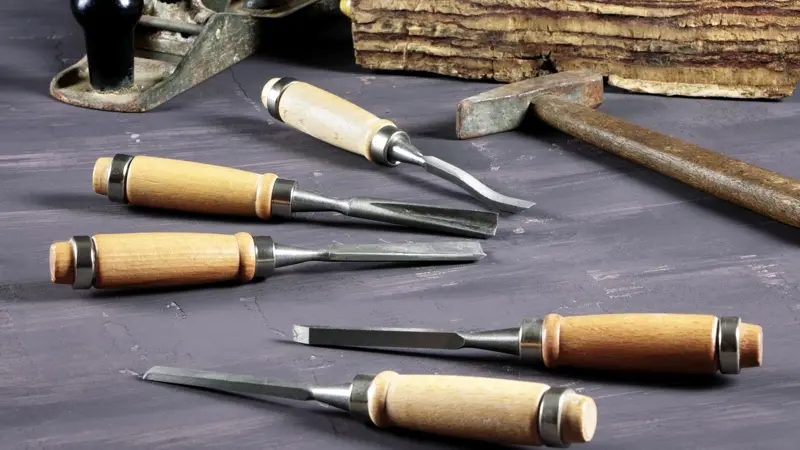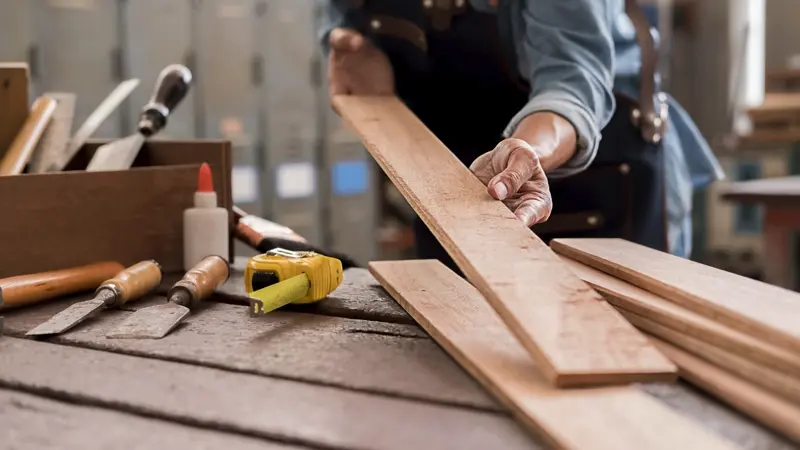Chisels stand as a proud testament to the enduring art of traditional woodworking. These essential tools, with their razor-sharp edges and robust handles, are indispensable for a host of fundamental tasks. Their critical role in woodworking cannot be emphasized enough—they are the go-to instruments for cutting, carving, and refining wood joints, the very pillars of the craft.
Table of Contents
With a chisel in hand, the woodworker’s skill shines—allowing for precision adjustments and elaborate detailing that machines often cannot replicate. They are particularly vital for creating precise dovetail joints, smoothing out rough saw cuts, shaving thin strips of wood to achieve an exact fit, and sculpting detailed carvings that lend unique personality to any workpiece. The vast assortment of chisels is designed with specialized functions in mind to address the varied demands of woodworking.
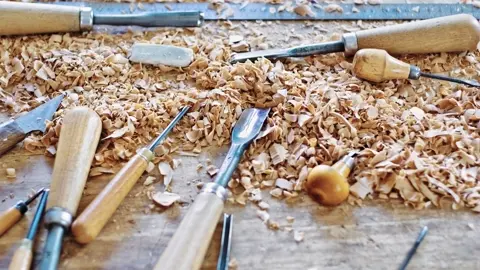
The Role of Chisels in Artisan Woodworking
Chisels may seem rudimentary, but they are fundamental to the art of woodworking. Essential for precision tasks, their masterful construction empowers artisans to etch intricate patterns, trim components accurately, and perform exquisite joinery that other tools can’t match. In the hands of a master woodworker, a chisel is more than a mere tool—it transforms into an extension of their artistic vision.
Unlike power tools, which can inadvertently remove excess material or cause splintering, chisels offer woodworkers meticulous control over their workpiece. Skilled artisans can manipulate a chisel with such deftness that they create joints with exceptionally tight fits and barely noticeable tolerances, crucial for the durability and strength of the finished product.
In addition to their role in joinery, chisels are indispensable for intricate detailing. They empower craftsmen to carve artistic elements and fine details into their creations that would be unfeasible using more cumbersome tools. Such refinements elevate a simple piece of wood into an exquisite piece of art, enhancing its economic and aesthetic value significantly.
The artful use of chisels goes beyond mere strength and accuracy; it demands the finesse of an artist. A craftsman’s array of skills is revealed in their deft handling of these instruments as they shape ordinary wood into practical masterpieces.
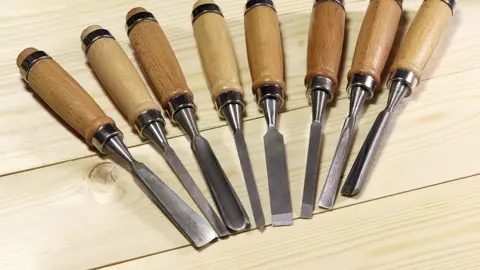
The Most Prevalent Types of Chisels
Available in various shapes and sizes, with sharp blades tailored for specific jobs, chisels enable the creation of seamless dovetail joints, robust mortises, and ornate details—elevating utilitarian craft to an artistry level. From beveled-edge bench chisels for everyday tasks to mortise chisels for heavy-duty work, woodworkers are equipped to confidently approach any project. Thus, a quality set of chisels is indispensable in a workshop, infusing life into a woodworker’s imaginative designs.
1. Bevel Edge Chisel
Bevel edge chisels are highly regarded in the woodworking community for their unparalleled versatility and precision. These chisels feature angled edges that taper to a sharp point, providing exceptional maneuverability. The beveled design not only enhances their appearance but also serves a practical purpose, allowing woodworkers to access tight spaces with ease. Additionally, for tasks requiring meticulous detail, such as carving precise grooves for mortise and tenon joints, these chisels offer extraordinary control and finesse.
2. Mortise Chisel
The Mortise Chisel is an essential tool for the refined craft of traditional woodworking. Specifically designed for carving out mortises—precisely engineered cavities in wood that fit a tenon perfectly—it ensures a joint with lasting strength. The chisel’s thick, sturdy blade is its hallmark, built to withstand the repetitive impact of mallet strikes without fail. Its durable build allows for controlled and accurate cuts, even through tough wood grain, efficiently excavating material to produce a clean, rectangular hole.
3. Paring Chisel
A paring chisel is an essential tool in the refined craft of woodworking, epitomizing finesse and precision. Its slender blade is expertly designed to shave delicate slivers from wood, making it perfect for tasks requiring exactness. Master woodworkers commonly use it to fine-tune joints, ensuring a flawless fit that is both attractive and sturdy. The chisel’s deft design is also crucial for navigating tight corners, removing imperfections with precise accuracy. Unlike its bulkier counterparts that need hammering, the paring chisel is gently guided by a careful hand.
4. Firmer Chisel
The firmer chisel is a versatile and robust tool, essential for both novice and expert woodworkers. It serves as a hybrid, balancing the precision of bevel edge chisels with the strength of mortise chisels. Its indispensable nature stems from its rectangular cross-section, which adds strength and enables it to execute a wide range of tasks. Whether it’s slicing through wood with a paring action or chopping out joints, the firmer chisel handles it all with efficiency and reliability. Its sturdy construction allows for heavy use without sacrificing accuracy or finish quality.
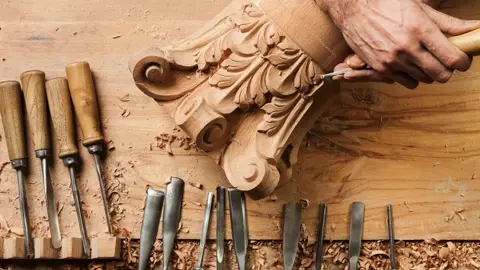
5. Carving Chisel
In the hands of a master craftsperson, the carving chisel transcends its role as a mere tool; it embodies their artistic intent. This essential tool varies in shape and size, each tailored for a distinct purpose. The gouge is noteworthy with its curved blade, ideal for carving out wood or stone to add dimension and life to a piece. The veiner, smaller and finer, carves delicate details that elevate the work’s complexity. A carving chisel is not just about utility — it demands a gentle yet deliberate touch and an eye for the potential in every material’s transformation.
6. Dovetail Chisel
The dovetail chisel stands as a prime example of specialized woodworking tools, expertly designed for the distinct task of crafting the renowned dovetail joint—a method lauded for both its robustness and aesthetic appeal. Unlike standard chisels with a wider angle, the dovetail chisel boasts an acutely angled edge that allows craftsmen to perform precise and intricate cuts needed for this elaborate joint. Its unique design enables effortless slicing through wood fibers at sharp angles, avoiding damage or splintering—an feat unattainable with a regular chisel.
7. Corner Chisel
Unlike traditional chisels with their curved edges, designed for shaping and carving, the corner chisel serves a distinct purpose: to carve perfectly square corners. Its sharp, right-angled blade is specially crafted to reach into the tight junctions where two surfaces converge, allowing it to clean up or create precise 90-degree angles. This capability is essential for tasks like fitting hinges, door jambs, or when constructing any structure that requires exact corners for a tight fit and a professional appearance.
8. Butt Chisel
Butt chisels are a specialized tool designed for precision in carpentry. More compact than standard chisels, they are ideal for working in restricted spaces where detailed joinery is unnecessary. Carpenters and woodworkers rely on them for essential tasks such as fitting door hinges or installing hardware. Their design enables users to apply force efficiently, ensuring precise cuts without compromising on the power needed to work with wood effectively.
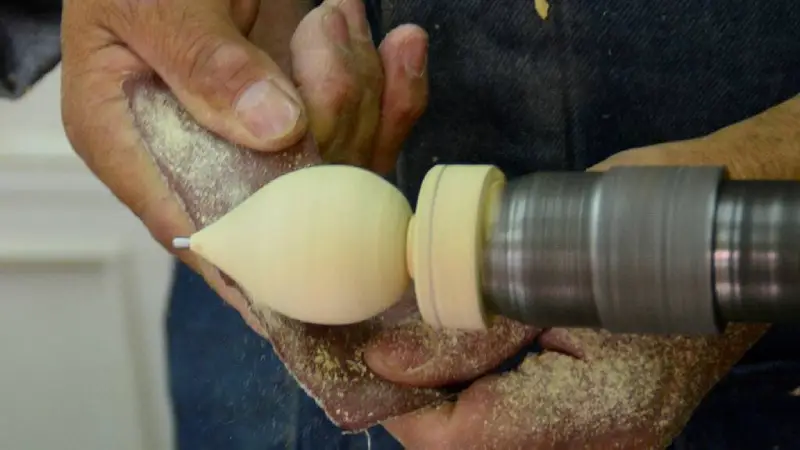
The Bottom Line
Chisels are a fundamental component of any woodworking toolkit globally. Mastering their use enables craftsmen to tackle projects with increasing complexity and precision, transforming simple wooden pieces into enduring works of art and practicality.
